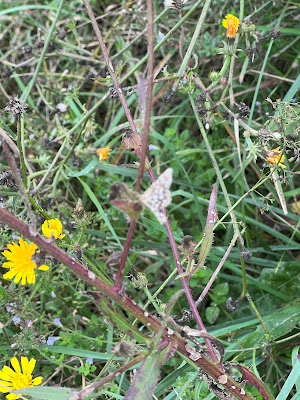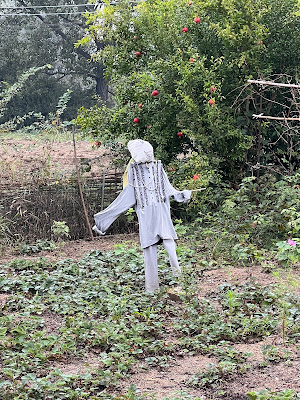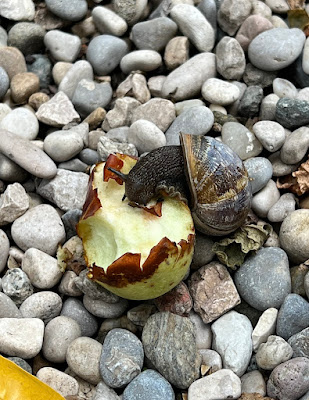Martin's Moths
A tale of moths and men.
Sunday 20 October 2024
The brighter side of Leyland Cypress
Wednesday 16 October 2024
Bring on the Robots
 |
| Look carefully... |
 |
| Aha! Got the insect. But the background? |
 |
| A bit sculptural? |
Wednesday 9 October 2024
Italian excursion
The day after my last post, we headed off to Italy and a wonderful week in Bologna, Ravenna and Ferrara. I wasn't especially in search of moths but I kept an eye out and soon realised that a familiar species was wreaking as much havoc on Italian gardens as it is in the UK on box hedges in gardens such as those of the National Trust. A few minutes after seeing the devastated lines of box at the Palazzo Costabili in Ferrara, I spotted a black and white flutter and tracked an adult Box moth to its refuge in a large bush - shown below.
You can see from this aerial Google view below how much the Palazzo has to lose, although there are nicer and more interesting hedges than box in my view. I showed my picture to the staff at the museum's reception and they nodded gloomily. They knew all about the moth but like their counterparts in the UK where the moth arrived accidentally from south east Asia in 2007 and has since made itself thoroughly at home, there is little that they could do. Rooting out and replanting with a different hedging plant is the likely option.
Sunday 15 September 2024
Quiet times
There's supposed to be a warmer spell this coming week but so far hopes of an Indian Summer in the UK have gone the way of the rest of a below-average season all round. Wet and cold is how I will remember 2024 although we have had some stunning short periods of real warmth and the occasional brilliant day. Yesterday was one of them.
The clear sunny sky meant a cold night to follow, however, and the trap was thinly populated this morning. The best arrival was the very fresh Dark Marbled Carpet shown in my first picture, resting happily on the outside of the cowl.
My other main moth in the last few days has been the Angle Shades, one of the species most commonly sent to me for ID because they seem easily-disturbed by day. This happened to me on a bike ride earlier this week when I brushed a hedge and an Angle Shades whizzed out before skulking back into the shadows - pic below.
 Cousins on holiday in Spain have meanwhile had a more exciting time, thanks to their vigilant spotting of another triangular shape on a workaday litter bin. Can you see it in the top pic below? Move down, if not. The spotters are part of a great family network on WhatsApp called Insect Chat which is impressively successful at interesting a new generation in entomology and indeed wildlife of all kinds.
Cousins on holiday in Spain have meanwhile had a more exciting time, thanks to their vigilant spotting of another triangular shape on a workaday litter bin. Can you see it in the top pic below? Move down, if not. The spotters are part of a great family network on WhatsApp called Insect Chat which is impressively successful at interesting a new generation in entomology and indeed wildlife of all kinds.

















































